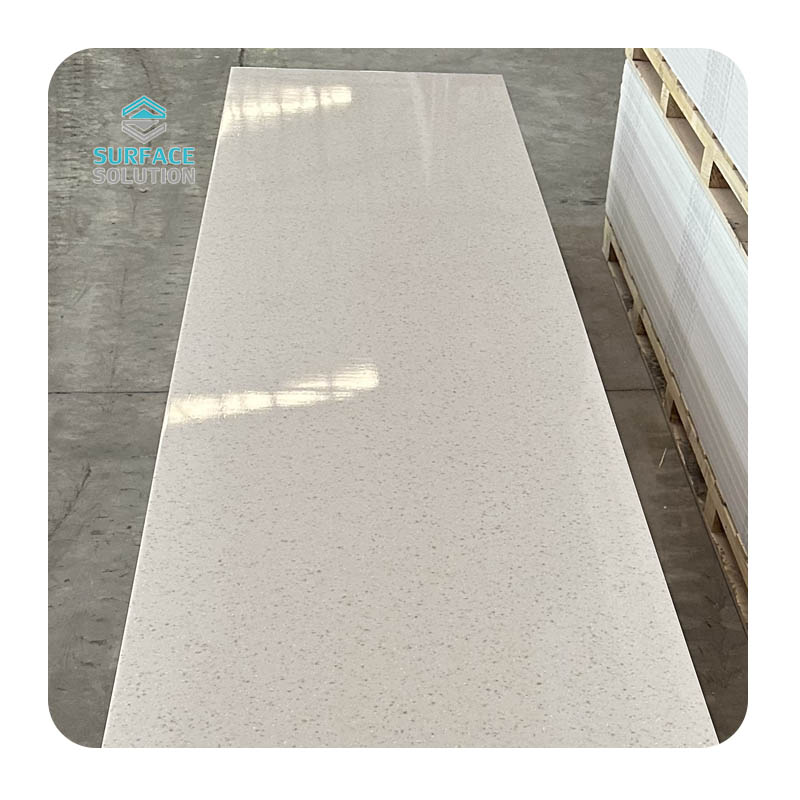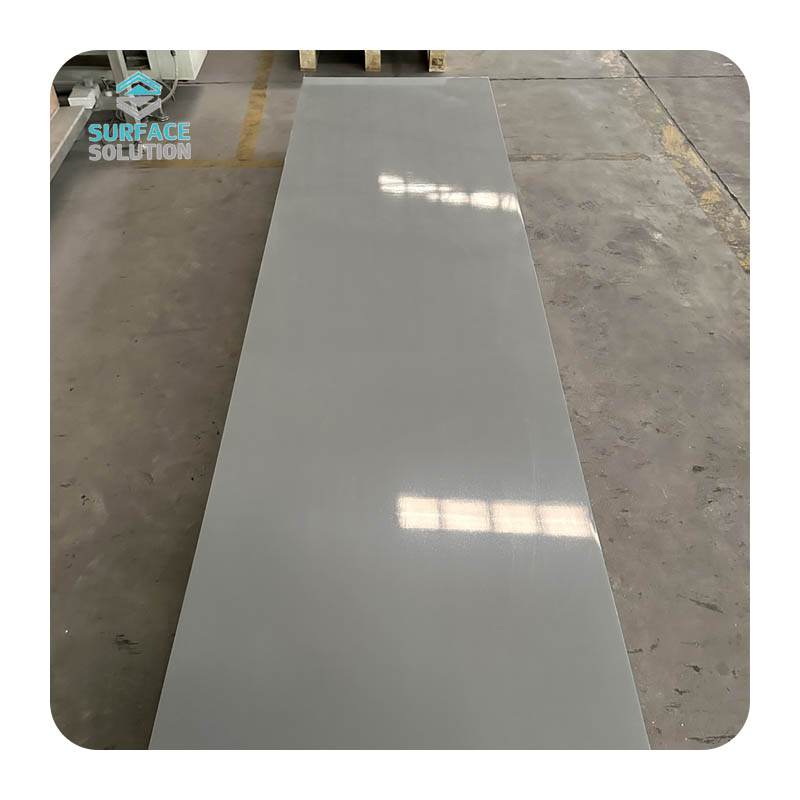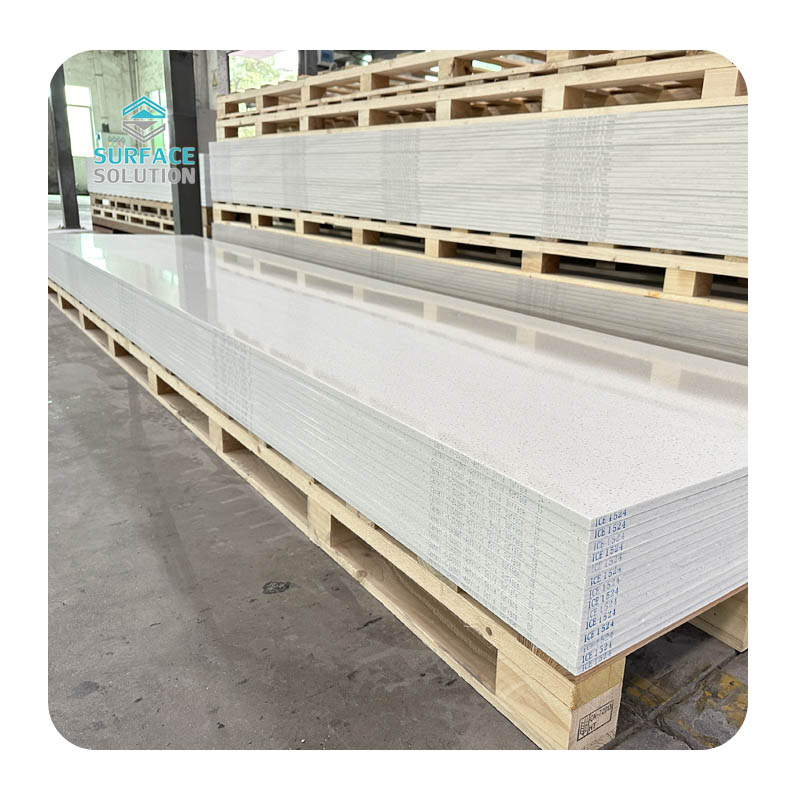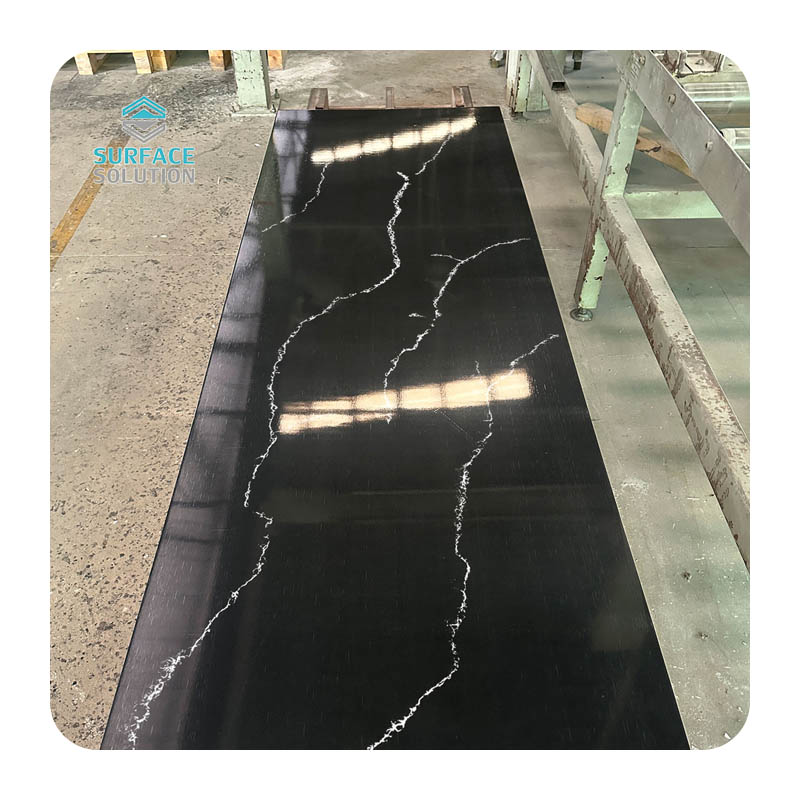Solid surface countertops have become a staple in modern kitchens, bathrooms, and commercial spaces, prized for their seamless appearance, durability, and versatility. Unlike natural stone (such as granite or marble) or laminate, they are engineered materials—crafted in factories through a precise blend of ingredients designed to balance aesthetics, functionality, and workability. But what exactly goes into making these sleek, customizable surfaces? Let’s break down their core components, variations, and how each ingredient contributes to their performance.
At their core, most
solid surface countertops are composite materials, meaning they combine two or more key ingredients to achieve specific properties. While formulations vary by brand and purpose, the basic components include:
Resins are the glue that holds the material together, providing flexibility, moldability, and resistance to moisture. The type of resin used defines the countertop’s category and key traits:
Acrylic Resins: The most common base for premium solid surfaces, acrylic resins are derived from petroleum (though recycled or bio-based versions are emerging). They typically make up 25–40% of the material. Acrylic-based surfaces are prized for their non-porous nature (resistant to stains and bacteria), ease of repair (scratches or chips can be sanded out), and heat tolerance (up to ~175°C/347°F for short exposures).
Polyester Resins: A more affordable alternative, polyester resins (also petroleum-derived) are often used in mid-range
solid surfaces, comprising 20–30% of the mix. They offer good durability but are slightly more porous than acrylic-based options, requiring occasional sealing in high-moisture areas. Polyester blends are also less flexible, making them better suited for flat surfaces than curved designs.

To add strength, reduce cost, and mimic the feel of natural stone, solid surfaces include mineral fillers—typically 55–70% of the total composition. The most common filler is:
Alumina Trihydrate (ATH): A fine, white powder derived from bauxite ore, ATH is prized for its fire-retardant properties (it releases water vapor when exposed to high heat, slowing combustion) and smooth texture. It also enhances hardness, reducing scratches, and gives the surface a stone-like weight and density.
Other fillers may include ground quartz, limestone, or recycled glass (in eco-friendly variants), which add unique visual textures (e.g., flecks or sparkles) while boosting sustainability.
To achieve their wide range of hues—from solid whites and grays to veined patterns mimicking marble—solid surfaces include pigments. These are typically inorganic (mineral-based) or organic dyes, mixed into the resin-filler blend during manufacturing.
Inorganic pigments (e.g., iron oxides) offer fade resistance, making them ideal for surfaces exposed to sunlight (e.g., kitchen islands near windows).
Organic dyes create more vibrant, saturated colors but may be less UV-stable, so they’re often used for indoor, low-light spaces.
Small amounts of additives (1–5% of the mix) fine-tune the countertop’s performance:
Curing Agents: Speed up or control the hardening process of resins, ensuring the material sets properly into sheets.
UV Stabilizers: Protect against discoloration from sunlight, critical for acrylic-based surfaces in bright rooms.
Antimicrobial Agents: Infused in some formulations (e.g., silver ions) to inhibit bacteria growth, a boon for kitchens and healthcare settings.
Flow Agents: Improve the mixture’s ability to spread evenly during molding, ensuring a smooth, consistent finish.

Not all solid surfaces are created equal—adjustments to the base ingredients create distinct types:
Acrylic-Dominant Blends: With higher acrylic resin content (35–40%), these are the most durable and repairable, favored for high-traffic areas. Brands like LG HI-MACS and Wilsonart Solid Surface fall into this category.
Polyester-Acrylic Hybrids: Combining both resins (e.g., 20% acrylic + 15% polyester) balances affordability and performance, offering better stain resistance than pure polyester but lower cost than acrylic-dominant options.
Eco-Friendly Variants: Modern formulations replace virgin resins with recycled acrylic (from post-consumer waste like old countertops) or bio-based resins (derived from plants like sugarcane or soy). Fillers may also include recycled glass or agricultural byproducts, reducing reliance on mined minerals.
The magic of solid surface countertops lies in how these ingredients work together: Resins provide flexibility and moisture resistance, fillers add strength and structure, pigments enable customization, and additives refine performance. This synergy creates a material that’s non-porous (unlike natural stone, which needs sealing), repairable (unlike laminate, which can’t be sanded), and endlessly moldable (allowing for seamless edges, integrated sinks, or curved designs).
Solid surface countertops are a masterclass in engineered materials—each component, from acrylic or polyester resins to mineral fillers and pigments, plays a role in their functionality and appeal. Whether you’re drawn to their seamless look, easy maintenance, or customizable designs, understanding their composition helps explain why they’ve become a go-to choice for modern spaces. As sustainability drives innovation, we’ll likely see even more eco-conscious tweaks to these formulations—blending performance with planet-friendly ingredients for the countertops of the future.




 What Are Solid Surface Countertops? A Complete OverviewIn kitchen and bathroom design, solid surface countertops stand out as a versatile choice, balancing functionality, aesthetics, and durability. Unlike natural stone (granite, marble) or synthetic quartz, they offer unique benefits—but what exact
What Are Solid Surface Countertops? A Complete OverviewIn kitchen and bathroom design, solid surface countertops stand out as a versatile choice, balancing functionality, aesthetics, and durability. Unlike natural stone (granite, marble) or synthetic quartz, they offer unique benefits—but what exact A Comprehensive Guide to Cleaning Solid Surface CountertopsSolid surface countertops, such as surface solution, Staron, or Swanstone, have become a popular choice for modern kitchens and bathrooms due to their durability, seamless design, and resistance to stains. Unlike natural stone like granite or marble,
A Comprehensive Guide to Cleaning Solid Surface CountertopsSolid surface countertops, such as surface solution, Staron, or Swanstone, have become a popular choice for modern kitchens and bathrooms due to their durability, seamless design, and resistance to stains. Unlike natural stone like granite or marble, What Is Solid Surface Material? A Complete GuideIn the world of interior design and home renovation, "solid surface material" is a term frequently heard—but what exactly is it? Unlike natural materials mined from the earth or rigid synthetic alternatives, solid surface is a engineered man-made mater
What Is Solid Surface Material? A Complete GuideIn the world of interior design and home renovation, "solid surface material" is a term frequently heard—but what exactly is it? Unlike natural materials mined from the earth or rigid synthetic alternatives, solid surface is a engineered man-made mater What Are Solid Surface Countertops Made Of? A Comprehensive BreakdownSolid surface countertops have become a popular choice in modern kitchens and bathrooms, celebrated for their seamless appearance, durability, and versatility. Unlike natural stone (such as granite or marble) or ceramic tiles, soli
What Are Solid Surface Countertops Made Of? A Comprehensive BreakdownSolid surface countertops have become a popular choice in modern kitchens and bathrooms, celebrated for their seamless appearance, durability, and versatility. Unlike natural stone (such as granite or marble) or ceramic tiles, soli
















